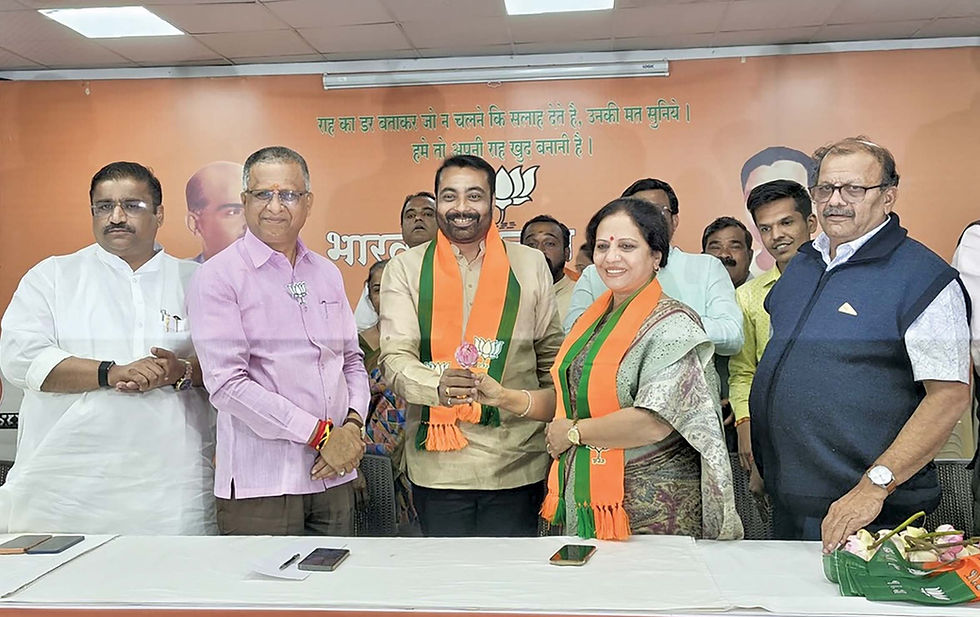Why is Mamata Seeing Ghost of Bangladesh?
- Romita Datta

- Aug 27, 2024
- 4 min read
Updated: Oct 21, 2024

Mamata is seeing a ghost of Bangladesh behind the massive outrage and waves of protest over rape and murder of the trainee doctor. And the reasons are many.
It’s been over a fortnight. Yet with each passing day the voice of protest is getting louder and stronger. From the streets of Kolkata it’s pouring into roads of hinterland. The cry for justice for a rape victim has consolidated into a wail of demands to set a lot of wrongdoings right. Here in lies the fear and trepidation. Wasn’t the issue that brought the youth of Bangladesh out on the thoroughfares a simple, innocent one of quota reform?
The chief minister of Bengal, known for understanding the pulse of people better than many, was quick to read the signages floating in the political horizon.
The most obvious reason for her to be tensed is that both the regime change in Bangladesh and the mass protest in Bengal, were student-driven to begin with. The two incidents---end of 15 year old Sheikh Hasina government and turbulence in West Bengal, over the heinous crime, falling back to back, the first on August 5th and the latter from August 9th onwards, give natural scope for comparisons. More so, because in both the cases the movement strayed beyond an affected constituency to include aggrieved people at large, cutting across socio-economic demography. If the quota reform protest started by students in Bangladesh became a mass uprising against an autocratic regime, the campaign demanding justice for the rape victim and overall safety and security of women in Mamata Banerjee’s Bengal soon snowballed into a movement of no-confidence against the government. Slogans--”Mamata must resign” also got floated in social media much in line with the call for ouster of Sheikh Hasina. In fact “Resignation of Hasina” became the single point agenda into which all other fringe demands coalesced.
Incidentally, even before people started drawing parallels, that there could be a thread of commonality in the way the upheaval in Bangladesh and Bengal played out, Mamata was quick to point out that the Opposition were trying to pull off a Bangladesh by politicizing the tragic incident: “A coordinated approach has been executed by the BJP and the CPIM with support from the Centre to defame Bengal and exploit the situation....They want to make a Bangladesh here. They are taking cues from student unrest in Bangladesh and are attempting to capture similarly. I have no longing for the chair. I came here to serve people.”
Not only Mamata, her political lieutenants are consistently equating the turmoil in Bengal with the mayhem in Bangladesh. Cabinet minister for North Bengal development Udayan Guha threatened to take stern action against those, who would be trying to exploit the situation by emulating a Bangladesh like movement. “ Even after the hospital was vandalised, the police did not open fire on anyone. The police will not allow a Bangladesh type situation. We will not allow Bengal to turn into Bangladesh, Guha thundered.
Is the government’s fear unfounded?
Apart from the similarities on ground zero, as to how and where the future course of events are heading to, there are ample reasons for Bengal to mull on-- as to what led to a Bangladesh like boiling point. To begin with, it’ll be appropriate to talk of Bangladesh and the prevailing situation, that made the students’ protest become big in magnitude. The students were out on the streets because of a high reservation in public jobs. Unemployment and stagnant job market in private sector coupled with a high rate of inflation drove the educated youth to rebel against the government.
But soon the students found enormous number of sympathisers, who were equally at the receiving end. According to Bangladesh citizens, the last two terms of the Sheikh Hasina government were a mockery of democracy. Even elections would be compromised. As Hasina grew from strength to strength, she politicized institutions. The rank and file of police owed allegiance to the ruling dispensation. Extortion, harrassment and raids by police and people in power became rampant. An atmosphere of fear and repression reigned and people got restless to overthrow the government.
Politicization of institutions has been happening in Mamata government too. Allegations are quite strong that police in Bengal functions at the beck and call of political bosses. The lapses and alleged loopholes on the part of police in handling the rape and murder of the young doctor have yet again revealed a sense of confused or misplaced loyalty.
But above everything else both Hasina and Mamata governments allegedly seem to have twined in accepting corruption as a way of life. In Bangladesh jobs of primary and secondary teachers got sold at premium, Rs 10-12 lakh in the Hasina regime. Even police had to pay up for prized postings and transfers. In Bengal busting of the teacher’s recruitment scam has revealed how unsuccessful and ineligible candidates got government jobs in schools in exchange of bribes.
Similarities are multiple and inescapable. Mamata has good reasons to be apprehensive. It’s not only she, who can see and connect the dots. People, out on the streets, clamoring for justice, can see a providential pattern somewhere in the unfolding of future events in these two places-- Bangladesh and Bengal. True, they share more than 2,217 odd km of border. They share the same umbilical cord, other than language, culture, ethos, icons. Even emotions are the same. So she cannot take any risk.
(The writer is a senior jounalist based in Kolkata. Views personal)





Comments